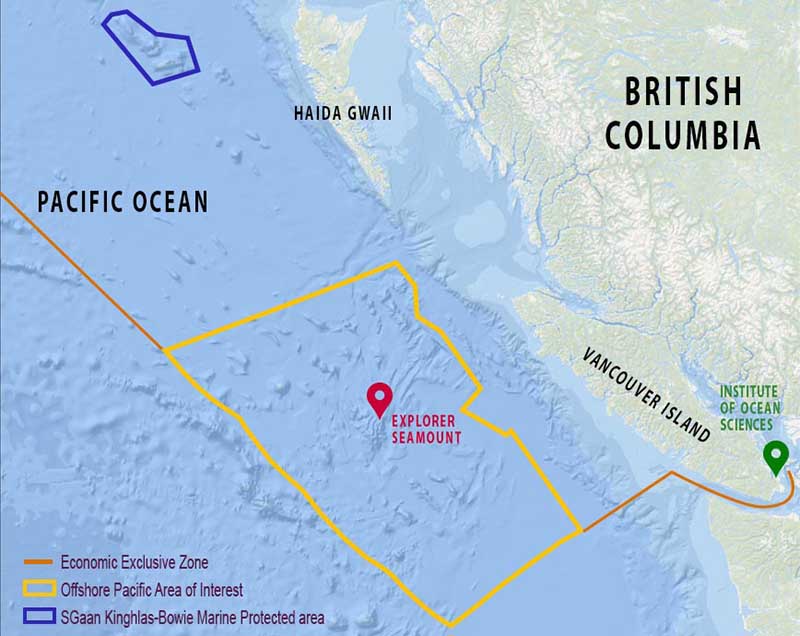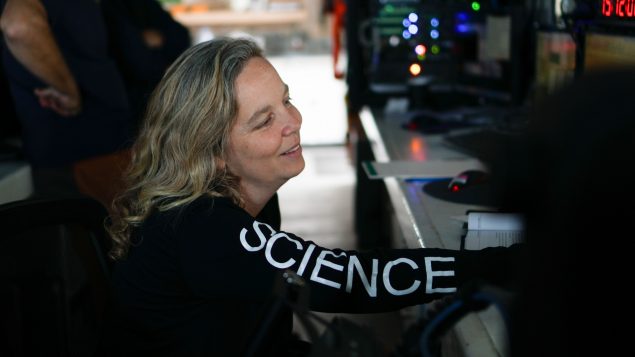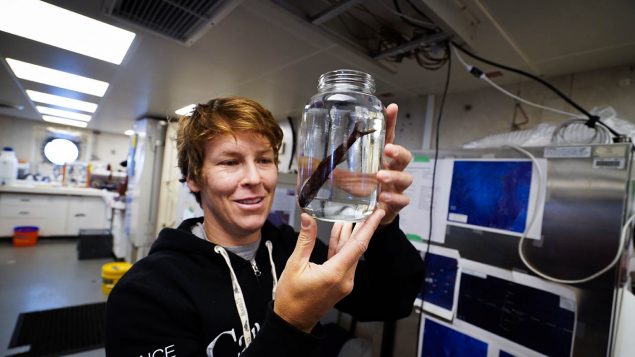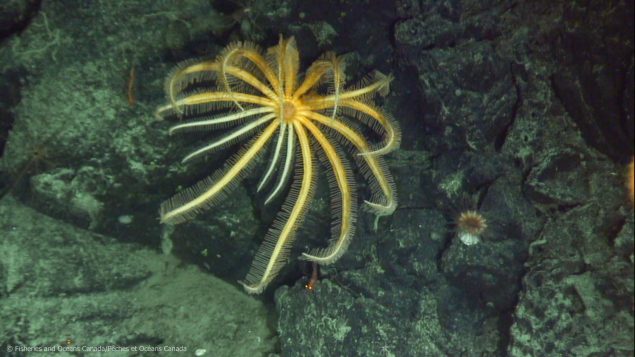
A team of federal scientists, members of the Nuu-chah-nulth First Nations and marine conservation groups have embarked on a two-week expedition on board the Canadian Coast Guard Ship John P. Tully to uncover the mysteries of Canada’s largest underwater volcano off the coast of British Columbia.
Explorer seamount is the largest of dozens of seamounts, mountains that rise from the ocean seafloor but do not reach the water’s surface, located in Canada’s new Offshore Pacific Area of Interest, a vast swath of ocean about 150 kilometres west of Vancouver Island that the federal government considers turning into a Marine Protected Area (MPA).
“We have this very unique area that has high tectonic activity that causes us earthquakes and in that area we have all this amazing geology, which brings up seamounts and hydrothermal vents,” said Tammy Norgard, head of the Offshore Marine Protected Area Program at Fisheries and Oceans Canada and the expedition chief scientist.
Still a lot to learn
However, the area is not mapped very well and researchers know very little about the unique ecosystems hosted by these seamounts, Norgard said.

Map: Pacific seamounts expedition 2019 (DFO)
In 2017, the federal government designated about 140,000 square kilometres of the ocean, about 150 kilometres west of Vancouver Island, as a new Area of Interest (AOI) with the intention of making it a Marine Protected Area (MPA) by 2020.
At the time researchers thought there were 19 seamounts in the area covered by the AOI.
“And then we started doing a little more research and modeling of sea surface heights and reading papers, and we realized that there were going to be more than 19 seamounts out here,” Norgard said. “And with that just a little more research before we came out, we found out that there are close to 60 seamounts.”

Tammy Norgard DFO co-piloting BOOTS at Explorer.
(Shelton Du Preez/Fisheries and Oceans Canada)
Data collected by the current expedition and the two previous missions in 2018 and 2017 will be essential in helping to define zoning within the marine protected area and what kind of activities will be allowed once it is set up, Norgard said.
Like the previous expeditions, the current mission has partnered with coastal Indigenous communities that have inhabited Canada’s West Coast since time immemorial and have taken keen interest in ocean conservation, she said.
“It’s amazing having them out here, the things that they see and things they say, and it’s also important that they have a reach-back to their communities to share what we’re seeing with their communities,” Norgard said, adding that their research is being livestreamed on Internet. “We’re reaching places that we haven’t been able to reach before, we’re in science camps in First Nations communities, we’re in people’s houses.”
‘Frontier exploration science’

Dr. Cherisse Du Preez observing a Garnet lantern fish. (Shelton Du Preez/Fisheries and Oceans Canada)
Cherisse Du Preez, a marine biologist at the Institute of Ocean Sciences at Fisheries and Oceans Canada, said one of the expedition’s most exciting things for her is the ability to collect the first ever imagery “of a world removed from our own.”
“We’re nowhere near the coast, we’re looking at animals that have never seen the light of day before, that exist completely removed from us and many animals that are new to science, habitats that are uncharted,” Du Preez said in a phone interview from on board CCGS John P. Tully. “It’s definitely frontier exploration science which is a dream as far as scientific work is concerned.”
The researchers deploy remotely operated vehicles (ROVs) to explore the seamounts.
“When we do a dive, we start at the base of a volcano and it’s almost like the ROV climbing up the volcano,” De Preez said. “And then, when we get to the summit, we never quite know what we’re going to find there.”
‘As Canadian as the Rockies’

One of the sea creatures filmed by Canadian researchers at Explorer seamount in July 2019 (Fisheries and Oceans Canada)
Researchers have found an abundance of sponge-bars and coral-bars on the slopes of these seamounts, she said.
“We’re finding diversity – corals and sponges that are creating these tropical coral reef ecosystems,” Du Preez said.
“And that level of diversity is something we don’t usually think of when we think of Canadian waters, and that’s exciting to me.
“The idea that we have something like a tropical coral reef in our Canadian waters, two kilometres below the surface in the pitch dark that we don’t know about but they are as Canadian as the Rocky Mountains and our forests and our bears.”


